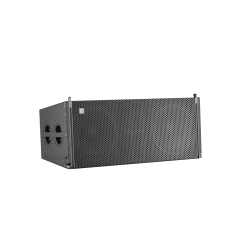For anyone operating or setting up professional audio, including for large venues and external events it is mandatory to know the main parts of a line array system. A line array system usually consists of a number of elements that play together to level layers the efficiency and audio quality.
The line array speaker is the most important and first element. Stacked vertically, the speakers perform as one and thanks to their coherent wavefront help secure a more even sound coverage. JBL Professional discusses that its VTX line array loudspeakers are bundled with the next generation high-power transducers allowing these boxes can output up to 145 dB of SPL exactitude and plenty of headroom for large stadium performances. High and low frequency drivers are housed in each speaker unit, harmonising a wide ranging frequency capability form 50 Hz to 20 kHz.
Secondly, the line array speakers shall powered by amplification system. While home audio amplifiers are relatively low-wattage, professional-grade systems can often require well over 2,000 watts per channel of output power. Your choice of amplifiers has a significant impact system efficiency and audio quality. Amplication is available from leading manufacturers like Crown Audio with built-in DSP (Digital Signal Processing) that enables very flexible sound-parameter control such as EQ, Delay and Limiting.
Rigging is a key component of the rope line array system: it used to deploy and secure strap arrays safely. Rigging hardware: frames, brackets and suspension cables to fasten the speakers in array configuration. This setup also means fine horizontal and vertical adjustment of the speakers to get aim just right for maximum audio coverage. Meyer Sound claims that the rigging system has to be designed within stringent safety norms, given average concert systems can weigh above 1.
Modern line array systems rely heavily on Digital Signal Processing (DSP). Sound engineers manipulate audio signals by way of DSP technology in order to create the desired sound characteristics. DSP enables features like automatic feedback suppression, room tuning and speaker alignment. Brands such as L-Acoustics integrate complex DSP algorithms into their systems to deliver real-time flexibility and the next level of sound reinforcement.

Control Interface: The command center of the line array system, which is typically done through a mixing console or digital audio workstation. It allows sound engineers to mix audio inputs from different sources, modify volume levels and add effects across several channels. Premium mixing consoles from companies such as Allen & Heath provide more than 96 input channels to allow for a wide range of complex audio setups with optimal efficiency.
Besides these, components like cabling and connectors are also equally important, which ensures undisturbed signal flow between audio source/Amplifiers/Speakers. Good cables, such as those made of USB connectors having durable skin and good protectors with less resistance can make all the difference between whether audio will remain clean at any given moment during a show.
Finally, software plays a role in line array systems which is greater and more important than ever before. Acoustic simulation on software platforms support engineers to simulate the acoustic environment and design best system configurations before deploying. d&b audiotechnik also offers computer modeling of coverage patterns and SPL distribution to facilitate accurate system planning, demonstrated by a variety of brands.
In the end, a line array system is made up of several parts: speakers (line arrays), amplifiers, rigging hardware, digital signal processing technology (DSP's) control interfaces and cabling; packaged together into software integration. These factors combine to produce high-quality sound on a large scale, so line arrays are commonly used in professional audio applications. If you would like to find out more on something similar a line array systems, then be sure to visit line array system.